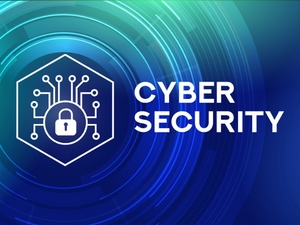In 2023, the landscape of cyber-attacks shifted significantly with the widespread adoption of AI (artificial intelligence), now wielded by individuals aiming to cause harm by exploiting vulnerabilities and conducting various malicious activities. While there may be a tendency to dismiss these warnings, the reality is that cyber threats are evolving rapidly, making it crucial for organizations to remain vigilant. Recent findings from the Hiscox Cyber Readiness report underscore the prevalence of cyber-attacks, with 53% of businesses experiencing at least one attack in the past year, and 21% facing threats that jeopardize their business's viability. This year poses particular challenges, given factors such as the U.S. presidential election and ongoing conflicts, which contribute to heightened tensions and motivate hacking groups to pursue both financial gain and acts of revenge.
1. AI-Powered Attacks:
The widespread adoption of AI has empowered cybercriminals to execute highly sophisticated attacks, leveraging advanced algorithms to create convincing deepfake content for social engineering purposes. These attacks often target individuals or organizations, utilizing AI-generated voices or images to impersonate trusted contacts, such as family members or authority figures. For example, scammers may use AI-generated voice calls to extort money by falsely claiming that a family member has been injured or kidnapped. Additionally, cybercriminals may exploit AI to conduct targeted phishing campaigns, impersonating company executives or IT personnel to trick employees into divulging sensitive information or providing access to corporate networks. To mitigate the risk of AI-powered attacks, organizations must prioritize employee awareness training to recognize and respond to phishing attempts effectively. Implementing multi-factor authentication (MFA) and other security controls can also help prevent unauthorized access to sensitive data and systems.
2. Increased Risk of Remote Work:
The rise of remote work has introduced new cybersecurity challenges, as employees increasingly rely on personal devices and home networks to perform their job duties. This shift in work dynamics presents an expanded attack surface for cybercriminals, who may exploit vulnerabilities in unsecured Wi-Fi networks or compromised personal devices to gain access to corporate systems and data. Furthermore, the blending of personal and professional activities on the same device increases the likelihood of inadvertent data exposure or unauthorized access to critical applications. To mitigate the risks associated with remote work, organizations should implement robust security measures, such as endpoint protection software, virtual private networks (VPNs), and secure remote access protocols. Additionally, employee training and awareness programs can help educate staff about the importance of cybersecurity best practices when working remotely.
3. Escalation of Ransomware Attacks:
Ransomware attacks continue to escalate in frequency and sophistication, posing significant financial and operational threats to businesses of all sizes. These attacks typically involve malicious actors encrypting critical data or systems and demanding a ransom payment in exchange for decryption keys or the release of stolen information. With millions of ransomware attacks occurring globally each day, organizations must remain vigilant and adopt proactive measures to prevent and mitigate these threats. This includes regularly backing up data, implementing robust cybersecurity controls, and conducting cybersecurity training and awareness programs for employees. Additionally, organizations should develop and regularly test incident response plans to ensure a swift and effective response in the event of a ransomware attack.
4. IoT Attacks:
The proliferation of Internet-connected devices, collectively known as the Internet of Things (IoT), has expanded the attack surface for cybercriminals, allowing them to target a wide range of devices and systems. From smart home appliances to industrial control systems, IoT devices are increasingly being targeted in cyber attacks, posing significant security risks to individuals and organizations alike. Hackers may exploit vulnerabilities in IoT devices to gain unauthorized access to networks, steal sensitive information, or launch distributed denial-of-service (DDoS) attacks. To mitigate the risks associated with IoT attacks, organizations should implement strong security measures, such as regularly updating firmware and software patches, segmenting IoT devices from critical network infrastructure, and using strong authentication mechanisms. Additionally, organizations should educate employees and stakeholders about the potential risks associated with IoT devices and encourage the adoption of security best practices.
5. Cyber Protection Legal Requirements:
In response to the growing threat of cybercrime, governments worldwide are enacting stricter cybersecurity regulations and imposing legal requirements on businesses to protect customer and employee data. These regulations often mandate the implementation of "reasonable security" measures to safeguard sensitive information from unauthorized access, disclosure, or misuse. For example, the Federal Trade Commission (FTC) and other regulatory bodies have brought enforcement actions against companies that fail to implement adequate security measures, resulting in significant fines and penalties. Additionally, many states have enacted data breach notification laws that require businesses to notify individuals affected by data breaches in a timely manner. To ensure compliance with cybersecurity regulations, organizations must stay abreast of evolving legal requirements, conduct regular risk assessments, and implement appropriate security controls and procedures. This may include appointing a dedicated data protection officer, developing incident response plans, and conducting employee training on cybersecurity best practices. By prioritizing compliance with cybersecurity laws and regulations, organizations can mitigate legal risks and protect their reputation and financial interests.
Uncertain about the adequacy of your cybersecurity measures? Ensure your protection with a complimentary Cybersecurity Risk Assessment. Our assessment comprehensively evaluates your system, pinpointing vulnerabilities and areas susceptible to attack.
Schedule yours today to fortify your defenses effectively. Click here to schedule a call, or give us a call at 832-536-9012.


